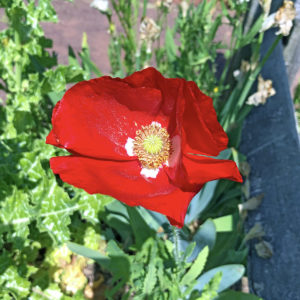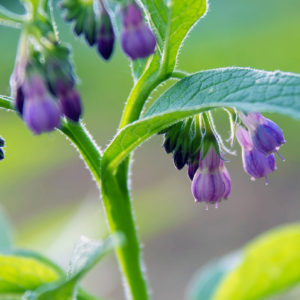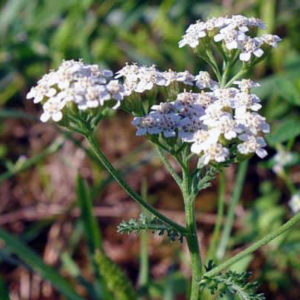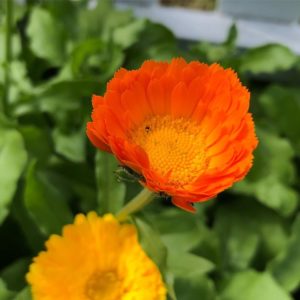The avid gardeners among us may know that peppermint, sage, and lavender featured prominently in the most common medicines during the American Revolution.
But there are a host of lesser-known plants that proved to be just as valuable to the doctors on the battlefields, says Anna Davis-Agostini, the park’s historical horticulturist. We’re featuring four of them here.
Please Note: Although you can find these plants among the park’s gardens—which Davis-Agostini designed and maintains, with help—the park’s gardens are not pick-your-own. If you spot these plants, please leave them be.
In addition, the information provided below is informational only. All of these plants are unsafe in untrained hands.
Calendula (Calendula officinalis)
“As a practicing herbalist, this is one of my favorite herbs. It has great functionality and beauty,” Davis-Agostini says. “I’m not the first to praise it. It’s been referenced in many poems over the centuries.”
Calendula has antimicrobial, anti-inflammatory, and antiseptic properties. Calendula flowers have been used as both an oral medicine and a wash or salve. “During the Revolution, it was mainly used for wound healing and cleansing,” Davis-Agostini says.
It also acts as a stimulant for the immune system, which made it an effective treatment for everyday rashes, sunburn, and healing wounds, especially when it was combined with yarrow. It was commonly used for centuries—all the way through World War II.
Corn Poppies (Papaver rhoeas)
 When these poppies bloom in May, they produce a stunning display that lasts through July.
When these poppies bloom in May, they produce a stunning display that lasts through July.
Beyond that, they’re most commonly associated today with various veterans’ remembrances here and in Europe because the corn poppies bloomed in the killing fields of Flanders, Belgium. They’re also referenced in ancient Chinese and Persian literature.
While corn poppies aren’t as potent as the opium poppy, they do have analgesic and mild sedative properties.
“A treatment using its flowers, leaves and stems would have provided relief to an injured or traumatized soldier during the Revolutionary War,” Davis-Agostini says.
Such use is not common today because of the potential for problematic side effects: vomiting, seizures, and even loss of consciousness when consumed in large amounts.
Comfrey (Symphytum officinale)
 Sometimes referred to as “knitbone,” comfrey root was first cited by Pliny the Elder.
Sometimes referred to as “knitbone,” comfrey root was first cited by Pliny the Elder.
“It’s been referenced through the centuries by herbalists and physicians alike as both an oral and topical treatment for everything from internal bleeding to abscesses and flesh wounds associated with broken bones,” Davis-Agostini says.
Today, comfrey root appears in salves, lotions, and oils, sometimes in combination with yarrow or calendula.
Generally, it’s no longer taken orally.
Yarrow (Achillea millefolium)
 Some of the earliest lore about yarrow dates back to ancient Greece. Homer describes the famed warrior and healer, Achilles, learning to use it as a medicine and then employing it on the battlefield in Troy. In fact, the scientific genus nomenclature, Achillea millefolium, is derived from him.
Some of the earliest lore about yarrow dates back to ancient Greece. Homer describes the famed warrior and healer, Achilles, learning to use it as a medicine and then employing it on the battlefield in Troy. In fact, the scientific genus nomenclature, Achillea millefolium, is derived from him.
“During the Revolution, yarrow and its flowers, leaves and stems were used as a styptic, or an agent to stop blood loss,” Davis-Agostini says.
It’s still in heavy rotation among modern herbalists because of its many medicinal and wellness applications.


